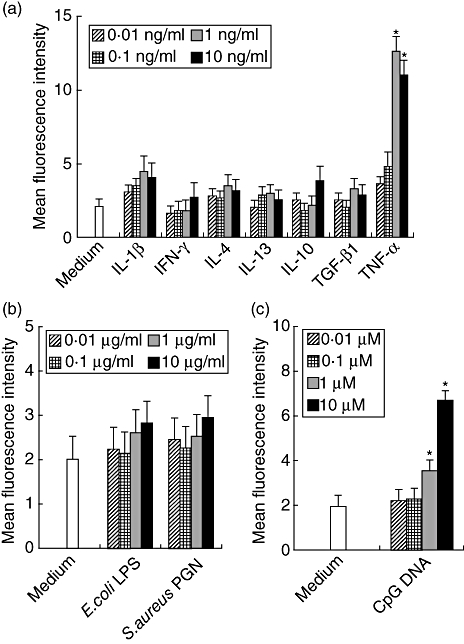Fig. 2.

The effects of cytokines and Toll-like receptor ligands on CXCR6 expression by human gingival fibroblasts (HGF). HGF were treated with interleukin (IL)-1β (0·01, 0·1, 1 or 10 ng/ml), interferon-γ (0·01, 0·1, 1 or 10 ng/ml), IL-4 (0·01, 0·1, 1 or 10 ng/ml), IL-13 (0·01, 0·1, 1 or 10 ng/ml), IL-10 (0·01, 0·1, 1 or 10 ng/ml), transforming growth factor-β1 (0·01, 0·1, 1 or 10 ng/ml), tumour necrosis factor-α (0·01, 0·1, 1 or 10 ng/ml), Escherichia coli lipopolysaccharide (0·01, 0·1, 1 or 10 µg/ml), Staphylococcus aureus peptidoglycan (0·01, 0·1, 1 or 10 µg/ml) or cytosine-guanine dinucleotide DNA (0·001, 0·01, 0·1 or 1 µM) and the cells were collected after 24 h. The expression levels of CXCR6 on the surface of HGF were measured using flow cytometry. The data are representative of three different HGF samples from three different donors. The results were calculated as mean and standard deviation (s.d.) of one representative experiment performed in triplicate. Error bars show the s.d. of the values. *P < 0·05 significantly different from the medium.
